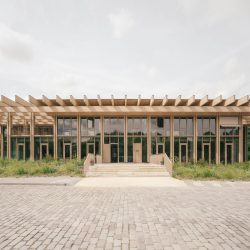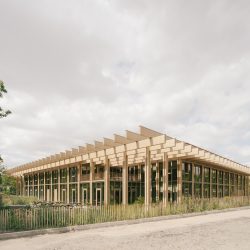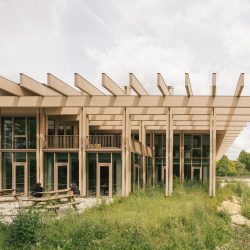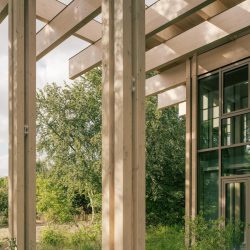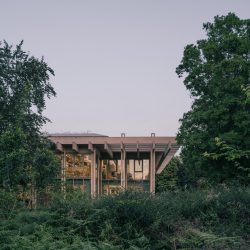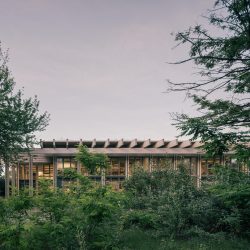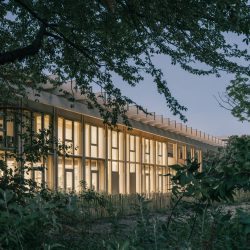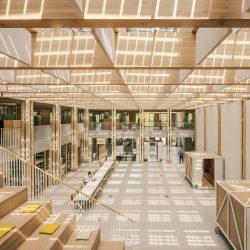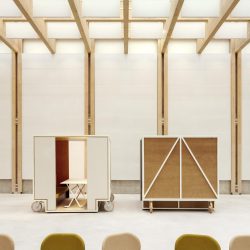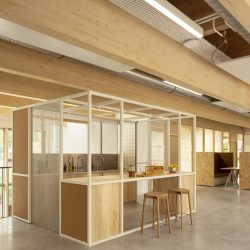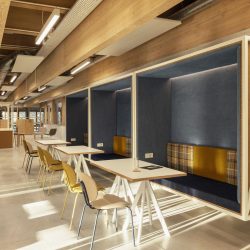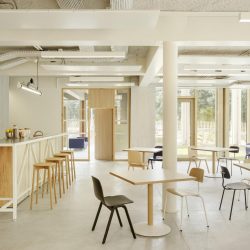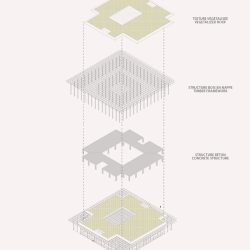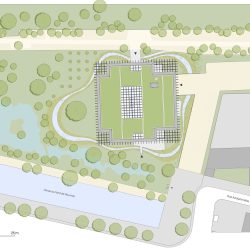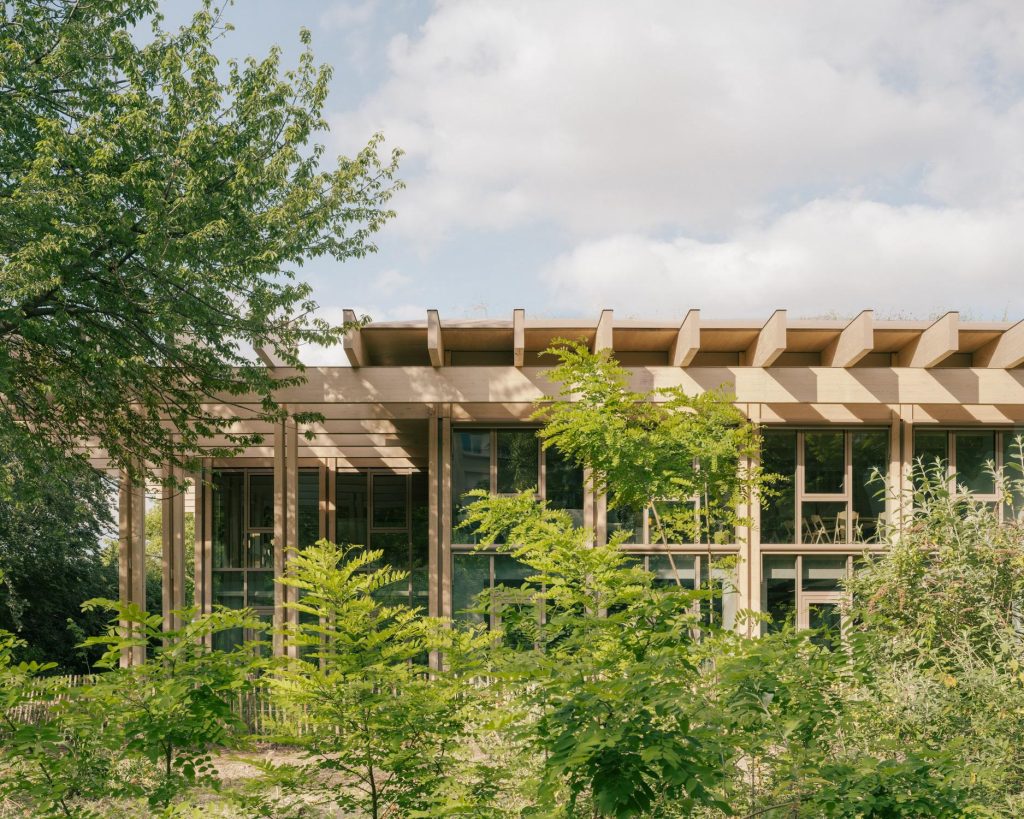
This building is the new “base camp” dedicated to all teams working for the public institution of Grande Halle de la Villette and its park. It is designed according to a generic structure where uses and makings of events shape the identity of the place, blending architecture in nature, where space is shared to get more. Its design offers two interlocking structures: one in concrete giving its strength, the second in wood for its lightness and low environmental impact. The bioclimatic atrium within the project’s center is bathed in an undergrowth atmosphere created by a play of natural light.
The Pavillon Jardins has been designed as a base camp for Teams in charge of running the Parc and the Grande Halle de la Villette in Paris on a 3,000 m2 surface, while 5,000 m2 of green space has been restored to the public park, along with access to the fond de Rouvray’s dock.
The building’s line follows footsteps of architect Bernard Tschumi 1982’s design of the Parc de la Villette and Folies. In order to preserve and enhance the natural heritage and biodiversity, the project had to take into account a specific timetable in order to preserve species (bird nesting, etc.).
The maximum height of the building was not to exceed that of the Folies, i.e. 8 meters. The two interlocking concrete and wood structures have 12-meter spans, freeing up indoor spaces. In constant evolution, this variable geometry building can be adapted to suit any projects it hosts.
Leading a Global Design approach, Atelier du Pont created both the architecture and the interior design of the project. Tailor-made micro-architectures punctuate spaces, serving as meeting cells, reprographics and coffee lounges. Workspaces are flexible and enjoy panoramic views of the Park’s abundant vegetation. Designed after users’ feedback, they are freely organized with structuring furniture created by the agency.
The project is designed with low-tech features (no air-conditioning, natural ventilation, triple-glazed facades, projection blinds, vegetalised roof, climatic wells, roof overhangs) surrounding a large bioclimatic central atrium acting as a thermal regulator. This atrium also transmits natural light into the heart of the project. Summer solar gain is managed by photovoltaic cells integrated into the glass roof, which provide part of the building with electricity. The wooden structure is made of douglas wood from France centre region (500 m3 of wood). Interior fittings are mostly biobased and made from PEFC wood (larch, birch, ash, oak, spruce and poplar).
_


